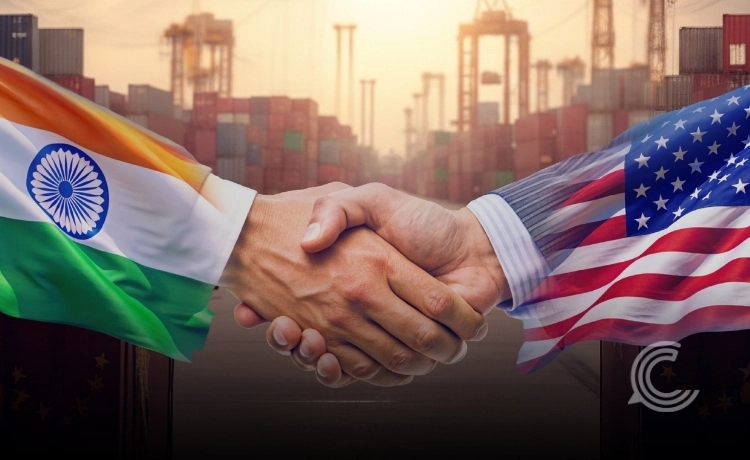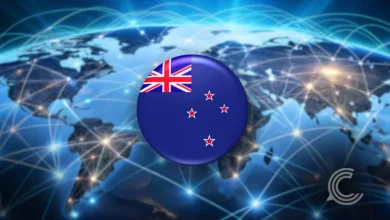India–US Trade Deal Nears Finish Line as Both Countries Rush to Seal December Agreement

Key Highlights
- India says a year-end trade deal with the US is within reach as virtual talks intensify.
- Most issues are “already resolved,” with remaining sticking points left for political-level intervention.
- Dual negotiations are ongoing, a broader trade pact and a separate settlement on Trump-era reciprocal tariffs.
India expects a long-discussed trade agreement with the United States to be finalised by the end of this year, with Commerce Secretary Rajesh Agarwal confirming that negotiations for the India–US trade deal have moved into their final phase.
Speaking at FICCI’s 98th Annual General Meeting in New Delhi, Agarwal said that both sides are holding “regular virtual discussions,” and most of the contentious issues that once stalled progress have now been resolved.
Year-End India–US Trade Deal Looks Imminent as Talks Accelerate
According to Agarwal, the India–US Bilateral Trade Agreement (BTA), which has been in the works for several years, is now being shaped against a dramatically different global trade backdrop. He noted that the geopolitical realignments, shifting supply chains, and the collapse of predictability in the WTO dispute‐resolution system have all added urgency to completing the pact.
“Any remaining issue over the India–US trade deal could be addressed at the political level,” the commerce secretary said, signalling that the technical negotiations are nearly complete and that only high-level clearance remains.
Two Separate Talks Underway: Fixing Tariffs and Finalising the Trade Pact
Agarwal confirmed that India is engaged in dual-track talks with Washington. One centered on the comprehensive trade deal and the other on settling reciprocal tariffs imposed during Donald Trump’s presidency.
As reported by multiple US outlets earlier this year, Trump-era duties included 25% tariffs on several Indian exports, as well as retaliatory Indian duties affecting American goods. Agarwal said the dedicated tariff-resolution pact aims to address the 25% reciprocal tariffs and the 25% oil-related tariffs that India imposed in response.
Furthermore, he also described these negotiations as an “extended framework discussion” aimed at restoring normal trading conditions and eliminating barriers that have affected sectors ranging from steel and aluminium to agricultural goods.
“Our assumption is the India–US trade deal will be beneficial for Indian exports when higher US tariffs are removed,” he said, adding that India anticipates official US delegations to travel to Delhi in the coming weeks.
India Wants Concessions for Labour-Heavy Sectors
As India seeks to finalise the India–US trade deal, the government is pursuing duty cuts for industries that generate large-scale employment. Officials familiar with the matter have stated that India’s request list includes textiles, garments and leather, gems and jewellery, plastics and chemicals, shrimp and oilseeds, grapes and bananas.
However, industry bodies argue that tariff relief in these sectors could deliver immediate export gains, particularly as global retailers diversify sourcing away from China.
What the US Wants in Return
Washington, according to Reuters and Bloomberg reporting, has sought duty concessions on certain industrial goods, automobiles, especially electric vehicles, wines, petrochemicals, dairy items and agricultural products, including apples, tree nuts and genetically modified crops.
These demands have historically triggered resistance from India’s farm and dairy lobbies, but officials now say that several earlier red lines have softened as part of a “managed opening.”
The Tariff Shock Still Looms Large
The urgency around the 2025 calendar year deadline is partly driven by tariff pressure. The US imposed 50% duties on most Indian exports from August 27, half of which is a penalty linked to India’s energy trade with Russia. Indian officials estimate that these duties could amount to $48.2 billion worth of goods based on last year’s export values.
Agarwal said India is awaiting Washington’s formal response on the bilateral trade package, the first tranche of which both sides had originally aimed to conclude in the fall.
Despite these hurdles, India’s exports to the US are $10 billion higher this year than last, Agarwal noted, describing the overall trade relationship as one that has “gone from strength to strength over the last two decades.”
No Alarm Over Trade Deficit
Responding to concerns about India’s widening trade deficit, the commerce secretary said the situation is “not in a worrying zone.” He added that healthy export performance to the US and Europe is offsetting sluggish demand in other markets.



